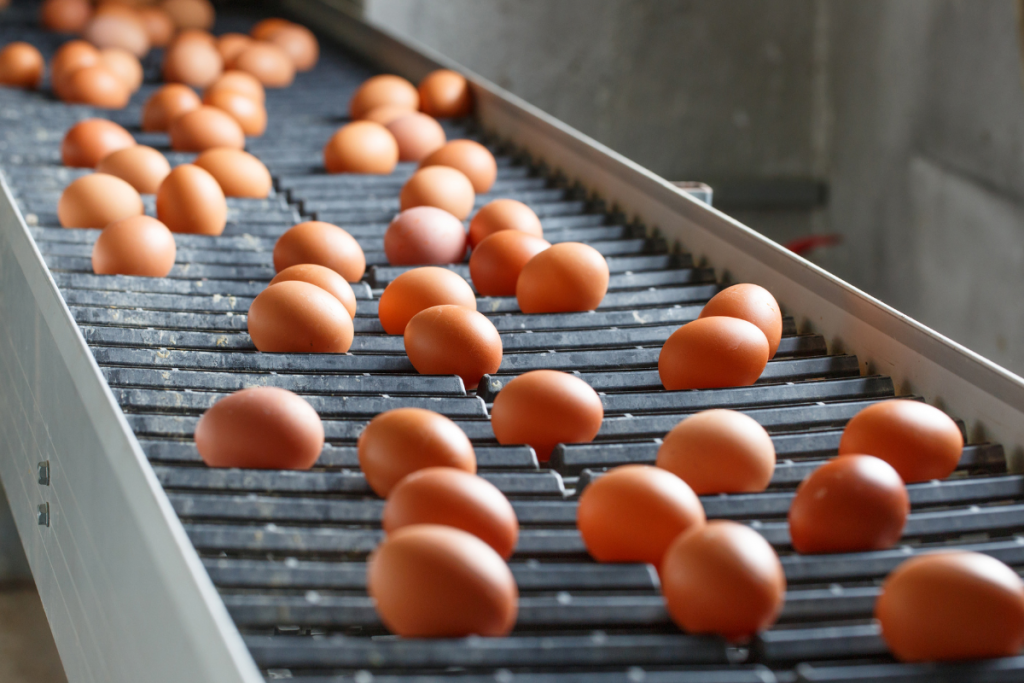The U.S. Department of Agriculture (USDA) is renewing its commitment to strengthen critical supply chains and address long-standing challenges within the food production and processing industries.
“As the pandemic has evolved and Russia’s war in Ukraine has caused supply chain disruptions, it has become clear we cannot go back to the food system we had before,” said the USDA in a press release.
The USDA aims to make the industry more competitive, equitable and resilient by investing billions of dollars in the food system. These investments are designed to build on a framework of similar legislation introduced in 2021 and could make the industry even more competitive.
Goals the USDA hopes to achieve with the new framework
1. Strengthen the food supply chain
The USDA wants to make the food system more widely distributed and local, cutting out some of the steps in the “farm to fork” model. The ability to gather, process, move and store food in different geographic areas of the country will provide more options for producers to sell locally — creating new economic opportunities and jobs in rural communities. This new plan is also expected to decrease our carbon footprint as it cuts down on transportation impacts from distribution.
2. Tackle market dominance
The meatpackers and processors buy from farmers and sell to retailers, which makes them a key component in the food supply chain, according to the USDA. Producers’ power in the marketplace has declined over the past 50 years with increased consolidation in the food system. Currently, 14 cents of every food dollar goes to food producers. The USDA says its investments will deliver a better deal for farmers, ranchers, growers and consumers.
3. Combat food insecurity
The USDA’s plan includes programs to ensure all consumers have access to fresh, healthy, nutritious food. Reliance on ingredients and food products sourced abroad illustrates the threats posed during disruptive events.
4. Put an emphasis on equity
The framework will create more economic opportunities for rural communities, underserved communities and communities that experience persistent poverty, allowing them to retain more profits
Helping farmers, ranchers and food producers
The COVID-19 pandemic highlighted the struggles of small and midsize food production operations and revealed the many barriers to entry for new farmers. To address these challenges, the USDA says it will invest up to $75 million to support urban agriculture and up to $300 million in a new Organic Transition Initiative (OTI). The OTI is intended to help farmers take home a greater share of the food dollar by helping them produce organic products, which come at a higher premium than non-organic.
Meanwhile, the push for urban agriculture is expected to connect consumers with nearby producers. According to the USDA, the Agriculture Improvement Act of 2018 authorized the Office of Urban Agriculture and Innovative Production to award grants to support urban agriculture. However, only 6% of all applications received were funded in 2020 and 2021. The agency says it will invest $20 million in funding for the backlog of applications and an additional $10 million in money for 2022.
The USDA also earmarked $40 million to support outreach and training activities for urban farmers. Additionally, $5 million will be set aside for the People’s Garden initiative.
How will the new plan impact food processing?
The COVID-19 pandemic also highlighted challenges in the middle of the food supply chain. Small and midsize farmers often struggled to compete for processing access and were left without a way to get their animals to market, according to the USDA. The agency wants to address these challenges in the following ways:
1. Expanding the Food Supply Chain Guaranteed Loan Program
The program backs private lenders that invest in independently owned food processing, distribution and aggregation infrastructure, and other projects along the middle of the supply chain. The USDA has deployed $100 million to make more than $1 billion in guaranteed loans available immediately. The program is accepting applications.
2. Investing in independent meat and poultry processing plant projects
The agency will offer up to $375 million in additional grants to processing facilities that prove they can fill the need for more diversified processing capacity. The first phase launched in 2021 recently closed. The agency accepted more than 200 applications, representing more than $800 million in funding requests.
There will be a second phase with these additional funds available to help smaller processors pay for the construction and expansion of existing facilities and the acquisition of equipment.
3. Creating a robust technical assistance network
The USDA is deploying $25 million through the Meat and Poultry Processing Capacity Technical Assistance Program to help meat and poultry processing facilities start or expand their operations. Accepted applicants will gain access to a full range of technical assistance to support their project development.
4. Addressing the credit access gap
Lenders have been reticent to invest in the meat and poultry sector because of the risk profile and lack of experience in the sector, according to the USDA. The agency says it will offer up to $275 million in incentives to lenders to make more capital available to independent processors that need credit. This should help provide loans and other support to businesses at rates and on terms that increase access to long-term, affordable capital.
Additional Investments
1. Workforce development
The USDA will spend up to $100 million to support the development of a pipeline of well-trained workers and safe workplaces in the processing sector. The labor market has become increasingly competitive and processing plants are struggling to hire skilled workers. The USDA will invest $40 million into existing National Institute of Food and Agriculture (NIFA) programs to train workers in the food & beverage industry.
2. Specialty crop programs
Specialty crop operations incur significant costs to comply with regulatory requirements and market-driven food safety certifications each year. The USDA will spend $200 million to help these operations meet those requirements. Getting these certifications can be a big barrier for cash-strapped producers. Easier access opens market opportunities for new farmers.
3. Support supply chain infrastructure
Up to $600 million in financial assistance will go to support food supply chain infrastructure that is not covered by the meat and poultry processing program. Money will go toward loans for independently owned and available infrastructure, such as cold storage, refrigerated trucks and processing facilities.
The USDA will make investments to address the limited processing, distribution, storage and aggregation capacity for a variety of food sectors, including high equipment costs, lack of competition, and limited supply chain and value chain coordination.
Following the money
The American Rescue Plan Act and other relief legislation is funding these initiatives. It is still unclear if and how these historic investments, especially the push for clean energy solutions and a switch to organic agriculture, will affect food costs for consumers, though it is evident they will transform the current farm-to-table model.
If you obtain a grant to invest in building or renovating a facility, consider how to make your dollar go further. This framework proves that success in the food industry is difficult to achieve, and owners should be well prepared before diving in.
Ready to expand your operation or have questions about building a new facility? Email us at foodforthought@stellar.net or give us a call at 800.488.2900.





Would like to establish organic farm in Florida dairy, beef, poultry,
and Vegetables ,. Would like to find funding help. Have found
real estate ,and key employees . Does USDA have have grants
to help process. Have been in agriculture better than 65 years
Regards Spencer